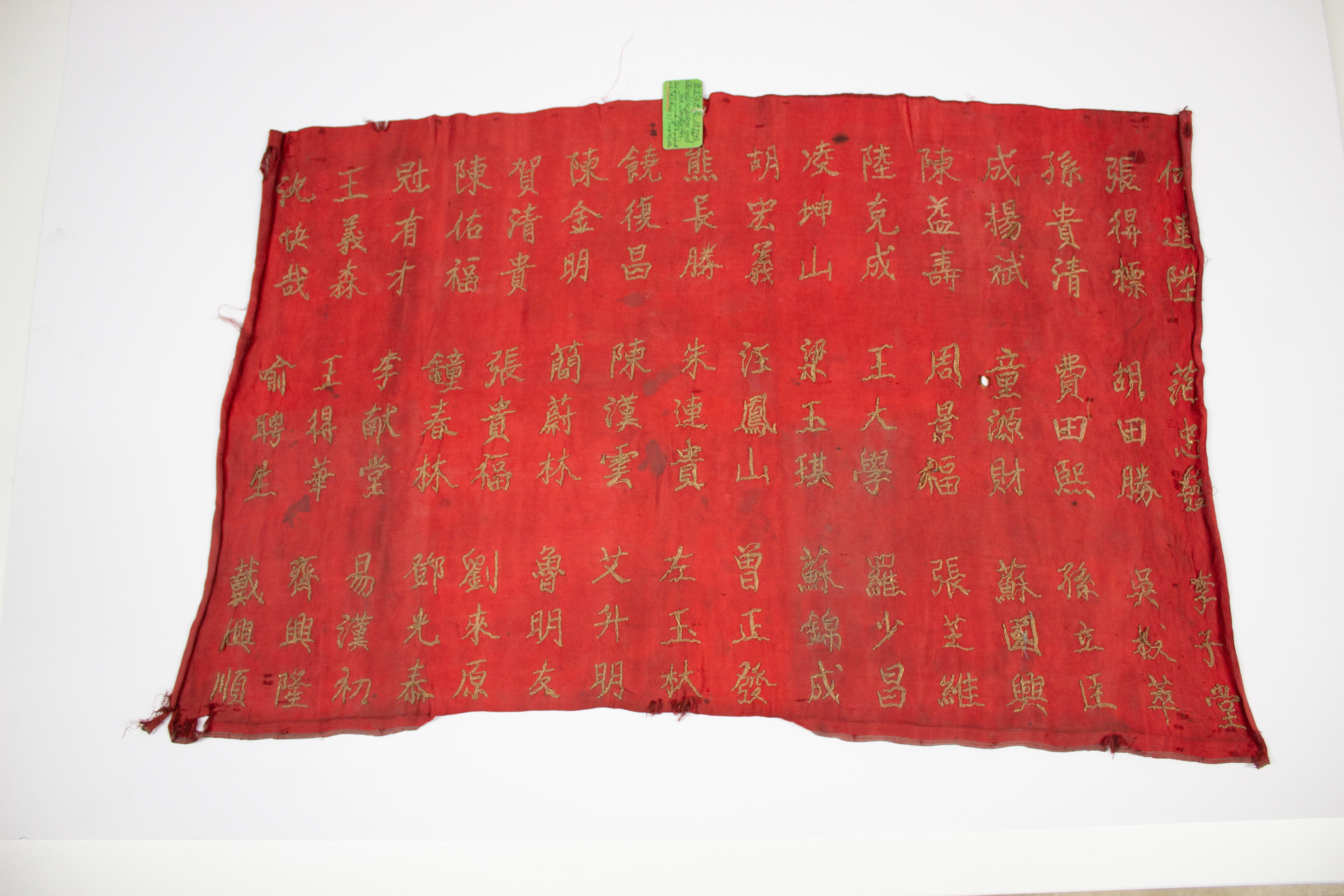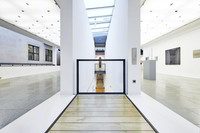A Chinese woven cloth from silk in red. It has Chinese characters sewed on it that are formed from cords.
In 1915, the cloth came into the museum's collection as a gift from Albert Haag who was at this time sergeant in the Kaiserliche Fortifikation (imperial fortification) in Ulm. Previously, Haag was a soldier of the German troops in the Ostasiatische Besatzungsbrigade (East Asian expeditionary corps) that was sent to China in 1900 for the suppression of the Boxer Rebellion and who fought there with the allied forces against die Boxers. He took part in the expedition in "Teintsin" (Tianjin) and "Kaumi" (Gaomi). Albert Haag has brought different objects from China. In total, he donated seven of the Chinese things mostly from the military context to the Gewerbemuseum (Museum of Applied Arts) Ulm in 1915/1916. The circumstances of the acquisition are unknown.
en

